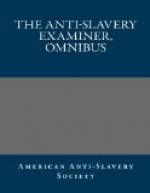Accompanied by an intelligent gentleman of Bridgetown, we visited two flourishing schools for colored children, connected with the Episcopal church, and under the care of the Bishop. In the male school, there were one hundred and ninety-five scholars, under the superintendence of one master, who is himself a black man, and was educated and trained up in the same school. He is assisted by several of his scholars, as monitors and teachers. It was, altogether, the best specimen of a well-regulated school which we saw in the West Indies.
The present instructor has had charge of the school two years. It has increased considerably since abolition. Before the first of August, 1834, the whole number of names on the catalogue was a little above one hundred, and the average attendance was seventy-five. The number immediately increased, and new the average attendance is above two hundred. Of this number at least sixty are the children of apprentices.
We visited also the infant school, established but two weeks previous. Mr. S. the teacher, who has been for many years an instructor, says he finds them as apt to learn as any children he ever taught. He said he was surprised to see how soon the instructions of the school-room were carried to the homes of the children, and caught up by their parents.
The very first night after the school closed, in passing through the streets, he heard the children repeating what they had been taught, and the parents learning the songs from their children’s lips Mr. S. has a hundred children already in his school, and additions were making daily. He found among the negro parents much interest in the school.
WESLEYAN MISSIONARIES.




